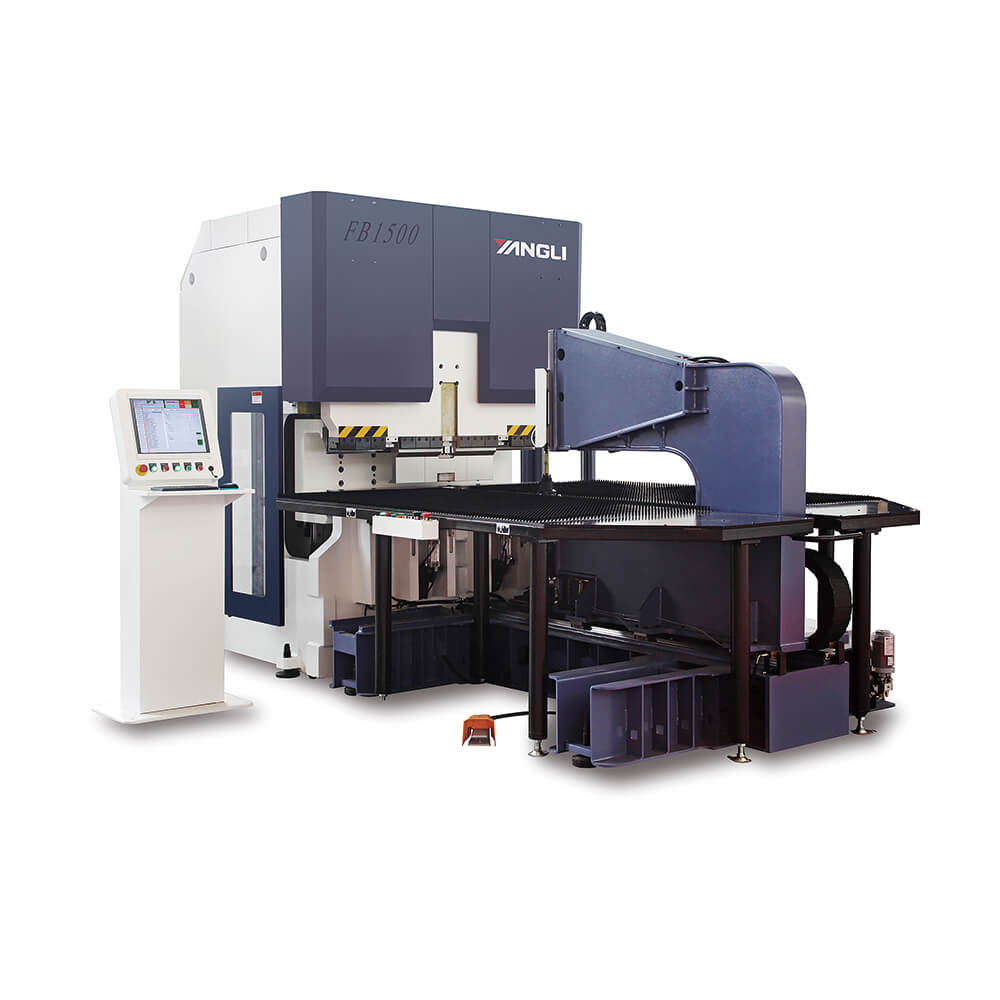Yangli group corporation ltd | Leading experts in metal forming & sheet metal machine tools
- All
- Product Name
- Product Keyword
- Product Model
- Product Summary
- Product Description
- Multi Field Search
Views: 0 Author: Site Editor Publish Time: 2025-03-26 Origin: Site
Welcome to the forefront of metalworking precision and innovation. Whether you are a seasoned fabricator or a newcomer to the industry, understanding how to achieve high accuracy in press brake operations is essential. Today, we will explore the key factors that influence press brake accuracy and provide practical tips on how to improve bending precision. This guide is designed to help you enhance your metal bending processes, ensuring efficiency, consistency, and high-quality results.
Press brake accuracy refers to how closely the formed angle and dimensions of a bent metal piece match the intended specifications. This includes not only the final bend angle but also the repeatability across multiple runs, precise positioning of the bend, and uniformity of the bend radius and shape. High accuracy reduces scrap rates and ensures reliable fits during assembly, which is crucial for efficient manufacturing workflows.
Several factors can impact the accuracy of press brake operations:
Machine Quality and Maintenance: Regular maintenance and proper calibration are crucial to ensure consistent accuracy.
Tooling Quality: Worn or improperly maintained tools can lead to inaccuracies.
Material Properties: Variations in thickness, strength, and composition affect bending accuracy.
Operator Skill: Skilled operators can significantly reduce errors due to improper machine setup or operation.
Programming Accuracy: Errors in input data for CNC press brakes can lead to significant deviations.
Different materials have unique properties that affect bending accuracy:
Aluminum: Malleable, allows for tolerances ranging from ±0.5° to ±1°.
Carbon Steel: Thicker carbon steel can maintain tighter tolerances, often within ±0.3° to ±0.5°.
Stainless Steel: Requires more force to bend, which can introduce deviations if not properly compensated for machine deflection.
Springback Effect: The tendency of metal to return to its original shape after bending.
Grain Orientation: Bending parallel to the grain can increase the risk of cracking or inconsistent angles.
Material Surface Coating: Surface coatings can alter friction and impact bending accuracy.
Residual Stresses: Can cause warping or unpredictable springback.
Flatness and Straightness of the Material: Minor curvatures can result in significant distortions once bending forces are applied.
Different types of press brakes offer varying levels of accuracy:
CNC Press Brakes: Offer high precision and repeatability, often within a few thousandths of an inch.
Hydraulic Press Brakes: Suitable for heavy-duty bending, with accuracy augmented by technologies like synchronized cylinders and CNC controls.
Electric Press Brakes: Known for their precision and energy efficiency, offering repeatability of ±0.001″.
Manual Press Brakes: Depend on operator skill and are suitable for low-volume production or simple bending tasks.
Hybrid Press Brakes: Combine hydraulic power with electric precision, offering enhanced control and accuracy.

To ensure high accuracy, several measurement techniques can be employed:
Angle Measurement: Using precision protractors, digital angle finders, or laser-based systems to check bend angles.
Dimensional Accuracy: Checking flange lengths and other linear measurements using calipers or coordinate measuring machines (CMMs).
Trial Bends: Performing trial bends on scrap metal to verify machine settings before full-scale production.
Repeatability Tests: Assessing the machine's ability to produce consistent bends under the same conditions.
Standardized Test Pieces: Bending standardized test pieces according to specifications to determine operational accuracy.
Straightness Checks: Verifying the straightness of the bend line using a straightedge and feeler gauge.
To enhance the accuracy of your press brake operations, consider the following tips:
Standardize Bending Charts: Use standardized bending charts for each type of material and thickness.
Select Proper Tooling: Ensure correct die openings and punch radii to minimize springback effects.
Implement Dynamic Crowning: Use dynamic crowning or mechanical compensation to correct for bed deflection.
Maintain Hydraulic Systems: Regularly monitor and maintain hydraulic oil levels and temperature.
Use In-process Angle Measurement: Install devices that provide real-time feedback and adjustments.
Document Adjustments: Maintain detailed logs of parameter changes for each job.
Calibrate Regularly: Regularly calibrate the back gauge and other components.
Incorporate Warm-up Cycles: Ensure the machine operates at a consistent temperature.
Conduct Frequent Spot Checks: Perform spot checks during longer production runs to detect any drift.
Invest in Technology: Choose press brakes with advanced features like real-time angle correction and dynamic crowning.
Schedule Preventive Maintenance: Regular maintenance of hydraulic, mechanical, and electronic components.
Utilize High-Quality Tooling: Use premium tooling to reduce wear and maintain accuracy.
Enhance Operator Training: Educate operators on advanced bending techniques and troubleshooting.
Perform Regular Calibrations: Regular calibration of the machine and tools.
Press brake accuracy is a result of a collective commitment to excellence, involving regular calibration, vigilant maintenance, and expert handling. While maintaining high accuracy involves certain costs, the benefits include reduced scrap rates, rework, and improved output quality. Achieving high precision in press brakes is critical for industries requiring exact specifications, and it requires a comprehensive approach to operations, updates, and handling.
By understanding and applying the principles discussed in this guide, you can significantly enhance the accuracy and efficiency of your press brake operations. Whether you are working on small-scale projects or large-scale manufacturing, precision is key to success. At YangLi, we are dedicated to supporting your metalworking journey with reliable and high-performance equipment.